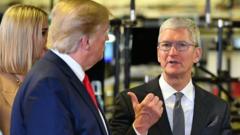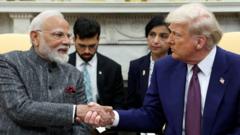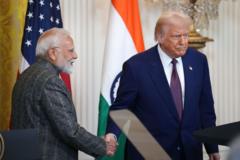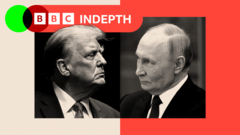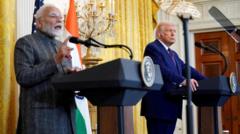As President Trump threatens to impose secondary tariffs on countries trading with Russia, the implications for global markets, particularly energy prices and international trade relations, are significant. The move aims to curb Russian economic power amid the ongoing war in Ukraine, but it may inadvertently impact US consumers and global economic stability.
Trump's Tariff Strategy: Implications for Global Trade and Economics
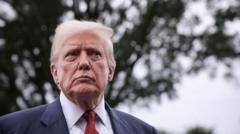
Trump's Tariff Strategy: Implications for Global Trade and Economics
The newly proposed secondary tariffs by President Trump on Russia threaten to reshape international trade dynamics and energy prices.
President Trump's recent announcement of sweeping secondary tariffs against countries trading with Russia signals a bold attempt to leverage economic pressure in response to Russia's ongoing war in Ukraine. The proposed secondary tariffs, which could apply a 100% import tax on goods from countries that maintain trade ties with Russia, aim to strengthen the West's stance against Russian aggression while potentially reshaping global trade dynamics.
Russia, despite being heavily sanctioned, continues to utilize its vast energy resources to finance its military activities. Trump's tariffs are set to take effect if a ceasefire is not reached by August 8, targeting nations such as China, India, and Turkey, which are among Russia's primary oil importers. History shows that secondary tariffs have been utilized before by the Trump administration, but the stakes are notably higher with Russia, the world's third-largest oil producer.
Kieran Tompkins of Capital Economics highlights that while the tariffs could disrupt Russian oil and gas supplies, causing energy prices to soar, various factors may mitigate this impact. OPEC+ nations' spare capacity and Russia's strategies to evade existing sanctions, including the use of a "shadow fleet" of tankers to obscure the origin of oil shipments, complicate the predicted outcomes.
India, a major buyer of Russian oil, has expressed its discontent regarding the tariffs, suggesting they could cause undue economic harm. Trump has specifically pointed to Indian imports as targets, where a 100% tariff could substantially increase prices for US consumers, notably concerning products like iPhones manufactured in India.
Targeting China poses a more complex challenge for Trump, as US imports from China are significantly higher than those from India, making compliance and enforcement more complicated. Moreover, relations between the US and China have been strained in recent years, and further tariff escalations could exacerbate these tensions.
The potential for a downturn in trade relations extends to Europe as well, with the EU still relying on Russian energy to some degree, despite efforts to reduce dependence. The imposition of secondary tariffs could hinder the overall volume of goods exported from the EU to the US, effectively escalating trade tensions and contributing to higher consumer prices.
While Russia's economy has shown resilience since the invasion of Ukraine, with growth forecasts suggesting a slowdown, Trump’s sanctions could prompt a deeper recession in Russia if exports are significantly curtailed. The complexities of global economic interdependence underscore the unpredictability of the outcomes stemming from such punitive measures.
Ultimately, Trump's tariff strategy is designed to hinder Russia's financial power and support efforts in Ukraine, but it bears the risk of creating economic repercussions both domestically in the US and across the global stage as nations recalibrate their trade strategies in response to these bold moves.



